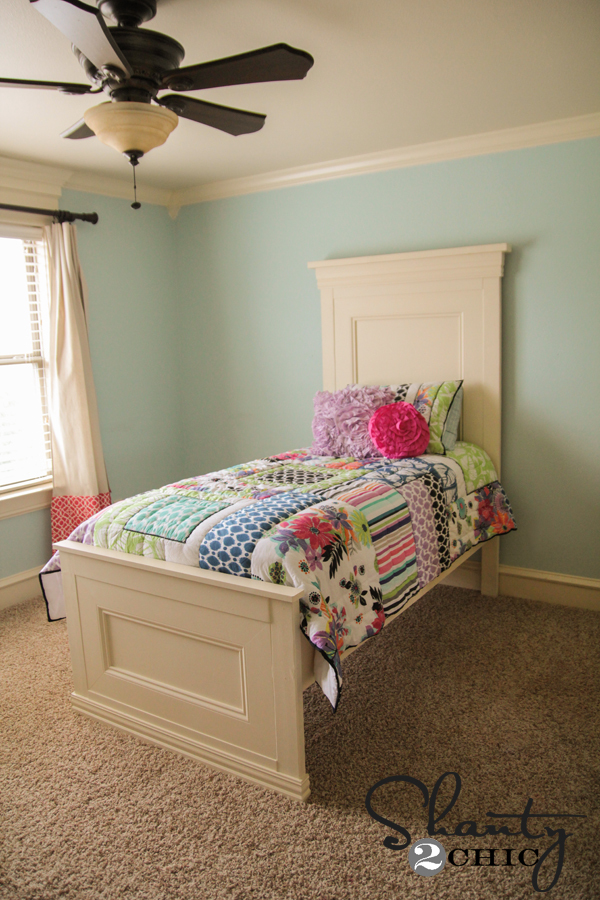
Build a panel bed with moulding - plans by Ana-White.com

Preparation
5 - 2x4 @ 8 feet long
2 - 1x4 @ 10 feet long
1 - sheet 3/4" plywood or MDF
1 - 1x3 @ 4 feet long
2 - 1x boards for siderails, 75" long (can be 1x12, 1x10 etc)
5-1/4" base moulding
Crown moulding
HEADBOARD CUT LIST
2 - 2x4 @ 72-1/2"
1 - 2x4 @ 35"
2- 1x4 @ 35"
1 - 3/4" plywood 48" x 35"
1 - 2x4 @ 46"
Crown and moulding cut to fit
FOOTBOARD CUT LIST
1 - 1x3 @ 43"
2 - 1x4 @ 27"
2 - 1x4 @ 35"
1 - 3/4" plywood 35" x 25-1/4"
Mouldings (all 5-1/4" base moulding) cut to fit
SIDERAILS/CLEATS
2 - 1x boards (shown at 1x12 size)
2 - 2x4s @ 75"
Please read through the entire plan and all comments before beginning this project. It is also advisable to review the Getting Started Section. Take all necessary precautions to build safely and smartly. Work on a clean level surface, free of imperfections or debris. Always use straight boards. Check for square after each step. Always predrill holes before attaching with screws. Use glue with finish nails for a stronger hold. Wipe excess glue off bare wood for stained projects, as dried glue will not take stain. Be safe, have fun, and ask for help if you need it. Good luck!
Instructions
Step 7
Step 10
Attach cleats to inside of bed rails. The bed can be used with a box spring or wood slats (1x or 2x boards cut to width of inside (39") can be screwed to the cleats. The cleats can be screwed to the siderails at different heights depending on your mattress/box spring size.
IMPORTANT: Due to the size of this headboard, it is recommended that you attach to a stud in the wall behind headboard to prevent forward tipping.
It is always recommended to apply a test coat on a hidden area or scrap piece to ensure color evenness and adhesion. Use primer or wood conditioner as needed.
























